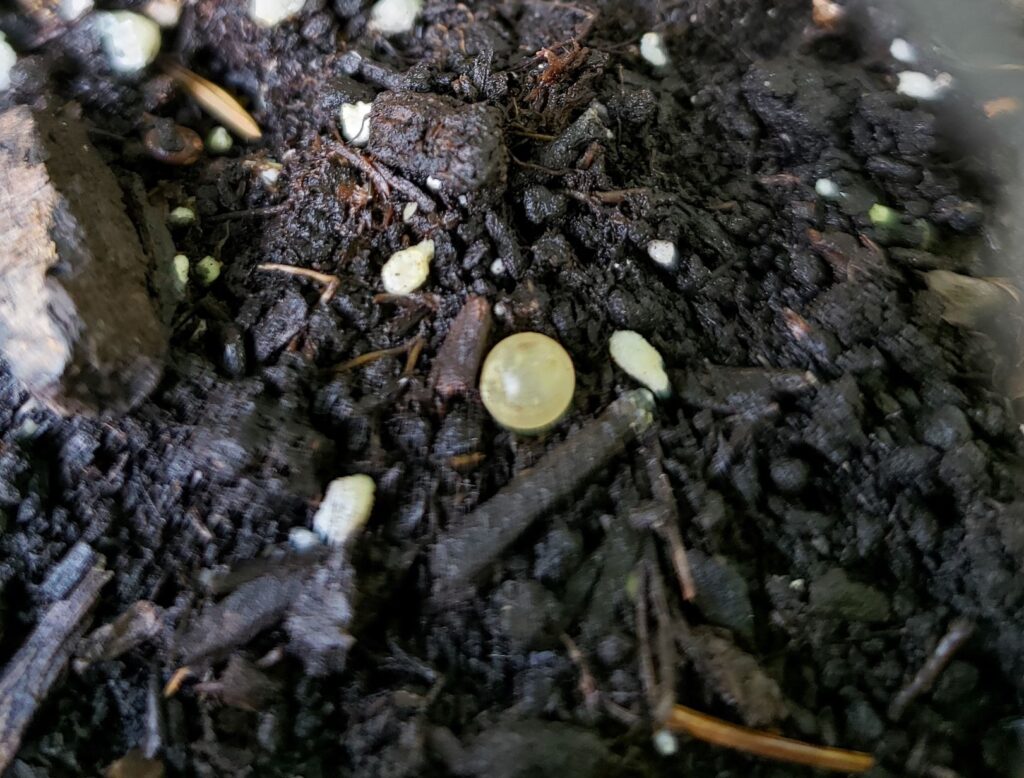
I have been finding round eggs (about 0.5 cm diameter or smaller) on the soil in several planters and in the larger planter boxes (4 ft wide x 2.5 feet deep by 3 feet high) in the backyard. They are round, white to slightly yellow-green tint and sometimes more translucent on the under side. They also exist in the soil when I dig below the surface (4 to 5 inches).
I did try to look into this, I think they may be earthworm eggs, but these are perfectly round. I have seen flying ants around. I also thought they might be snail eggs but they are not in clusters and I don’t see a ‘slime trial’. The soil is naturally clay like in our area but I added compost to the larger planters (1st year rhubarb plants, cucumbers) and I use a soil mix for planters for the pots growing herbs and geraniums. We have a shady backyard facing north (lots of trees) but the planted areas get decent sunlight.
The eggs are also in the front flower bed (south facing) near the rhubarb plant I planted this year in the east corner. The front flower bed mainly has euonymus shrubs. We do have a few snails in the front flower bed which I try to kill when seen. Something has been eating holes in the new (precious!) rhubarb plant leaves. I think the rhubarb is struggling this year with the heat and might have a fungal issue.
Question: Are the round eggs a good bug or a pest I should be worried about? Do you know what they are?
Many thanks! You provide a valuable service.
Thank you for this very interesting question. I had noticed these eggs in my potting soil, and had often wondered what they were, but had not got around to looking it up.
I am glad to report that they are not Fungus Gnats eggs (that are tiny white to yellow eggs in clusters of about 30 in wet soils). They are also not slug or snail eggs, since they are described as brownish-gray, slimy bundles.
They are also not earthworm eggs. I found this informative piece about earthworms: “Earthworms lay eggs inside amber-colored cocoons their bodies produce. Premature eggs that come out of their protective cocoons will shrivel and die. Eggs hatch inside the cocoon, and the cocoon itself becomes a protective egg for the baby worms inside.” https://www.gardenguides.com/how_7999533_identify-earthworm-eggs-soil.html
They may be perlite or vermiculite that was added to the potting soil. They also may be slow-release fertilizer, depending on whether they are a little bit larger than a normal seed egg. When water is added to the potting soil, they do swell up a little. Since they are in most potting soil, this is what I think they are.
On the subject of your rhubarb leaves that have some insect bites, please do not concern yourself. Rhubarb leaves are (slightly) poisonous. A few snail bites will not affect their stalk production, which is what we all love to eat. https://hortnews.extension.iastate.edu/1997/5-2-1997/rhubarbsafe.html
Happy growing!

